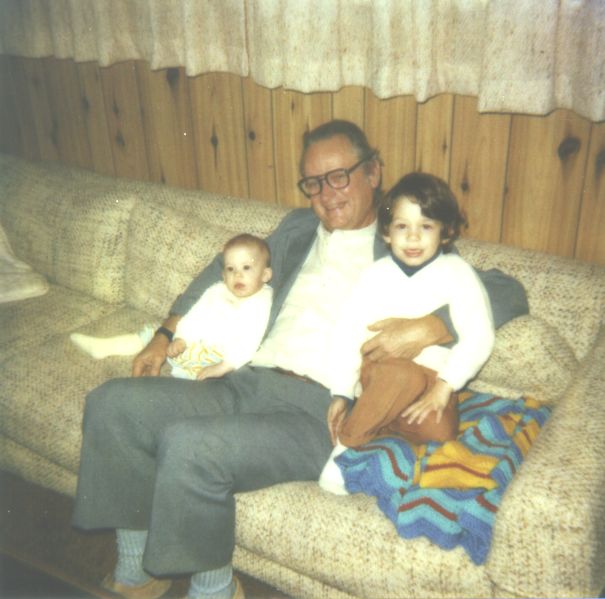Jess Brewer's memories of Ken Crowe
In 1969, after completing Bevatron Experiment 95 on CP violation in <math>K^0_{\mu 3}</math> decay, Don Miller (my first supervisor) left Berkeley (and what was then still called LRL) to become head of the Physics Department at Northwestern, leaving me to hunt for a new supervisor and a new PhD topic. It was the best choice anyone ever forced me to make. [I often advise graduate students to change advisors as soon as they learn the ropes, even if they get along famously with their first choice, because the first choice is based on limited information.] In my case, I had to choose between working for Owen Chamberlain (a famously nice guy and a Nobel laureate) on hypernuclei or for Ken Crowe (a notorious slavedriver) on muon depolarization in liquids, using methods now known as µSR.
I chose the latter because the whole idea of using an exotic particle physics phenomenon like P violation in <math>\mu^+</math> decay to probe "ordinary" materials seemed really cool, like being a character in my own science fiction novel! I went down to campus and asked Alan Portis if he thought muons could make a contribution to solid state research analogous to that of NMR; he said he seriously doubted it. That sounded to me like a challenge! (A few years later Alan came up and gave us all lectures on condensed matter physics so we could at least pretend to know what we were doing.) When I learned that the muonium (Mu) atom could be used as a double for H atoms to study otherwise inaccessible chemical reactions, that clinched it - I was in!
Then I set about getting to know Ken. I found this easy, actually, because all one really needed to realize was that Ken was a force of nature, obeying consistent rules of behavior like any other such force. When he set out on a mission, he gathered everything and everyone at his disposal to accomplish that mission as well as humanly possible (or better). Whether it was winching in the jib to reach that buoy before the next boat or working out the time evolution operators for the muonium spin system, perfection was the only acceptable - nay, the only permissable performance.
For some reason, many people found this hard to digest. I speculate that this was because they interpreted Ken's intolerance of imperfection as personal intolerance. Nothing could be further from the truth. Those who earned Ken's respect, on the water or in the lab, learned that his loyalty and generosity had no bounds, once he was sure that it was not wasted. Between our friendship and my observations of his devotion to his family, Ken taught me a lesson I have never forgotten:
Love is meaningless if it has to be earned;
respect is meaningless if it doesn't.
That being said, he could be daunting. The first two times I came into his office to give an update on my progress modeling muonium depolarization in liquids, I got thrown out in a hail of insults, all (in retrospect) richly deserved. The third time I was sure I knew what I was talking about, and when he started to give me a hard time I told him to shut up and listen! From that moment forward he treated me like an equal, and a respectful partnership began that lasted for decades.
The rest, as they say, is history. A fine scientific history it is, but this is a space for personal stories, so I will save the details for another page, saying only that I once was asked by the Nobel committee if there were anyone I'd like to nominate; I suggested Ken, for his key role in creating the field of µSR where I have toiled for the last 4 decades and had a wonderful time. Of course, just to keep it interesting I also nominated several others with whom Ken might have balked at sharing the stage in Stockholm. I think he would have gotten a chuckle out of that. :-)
